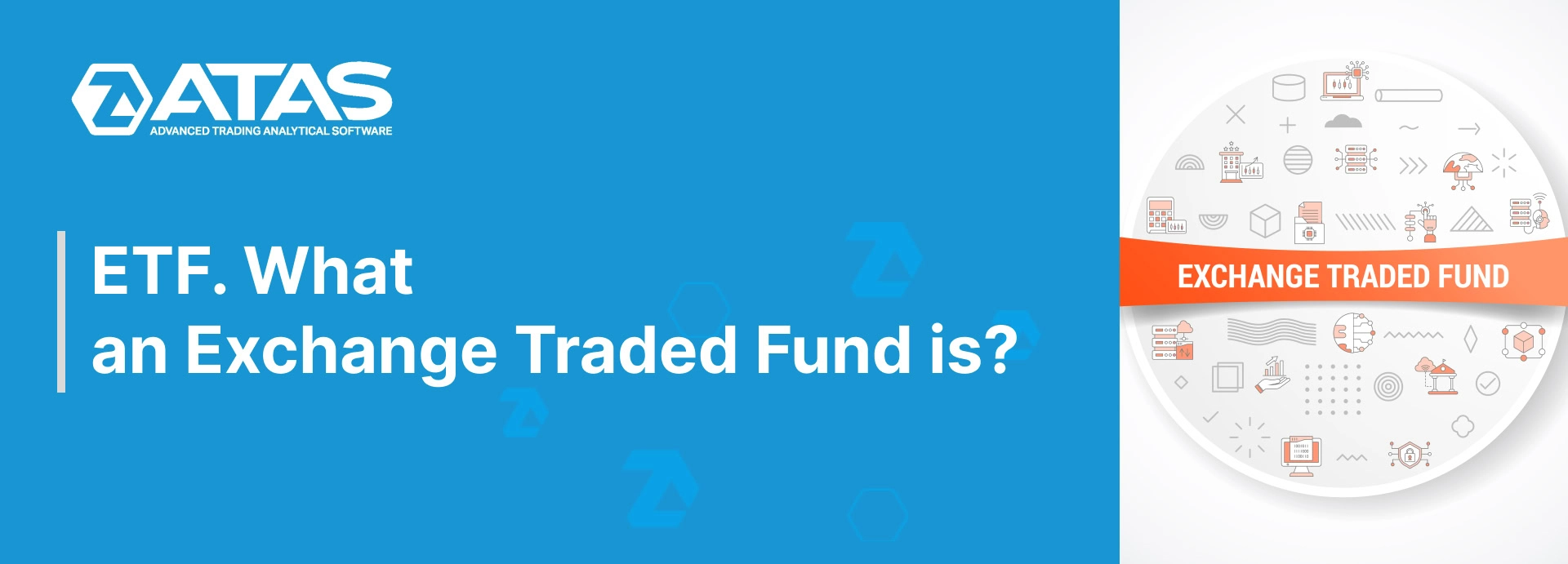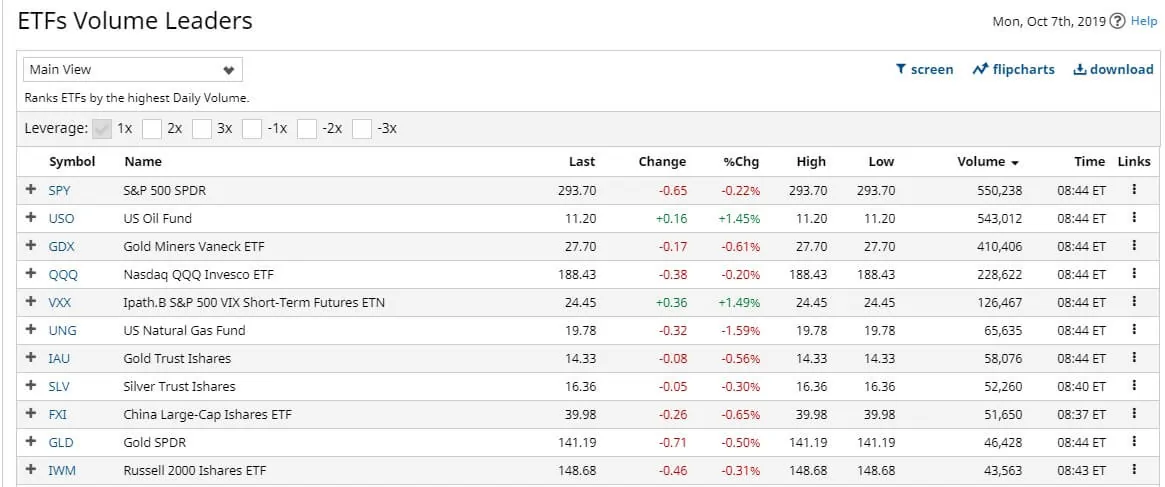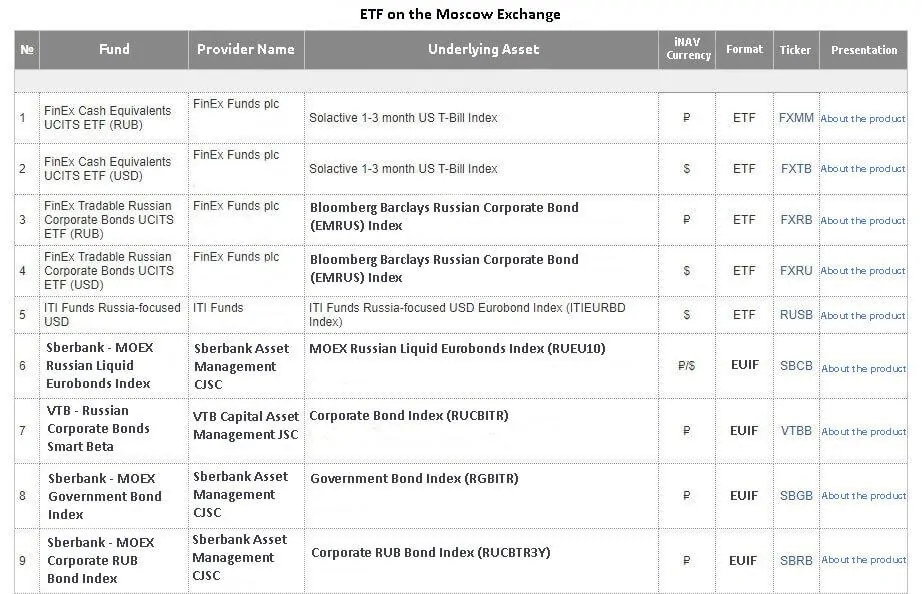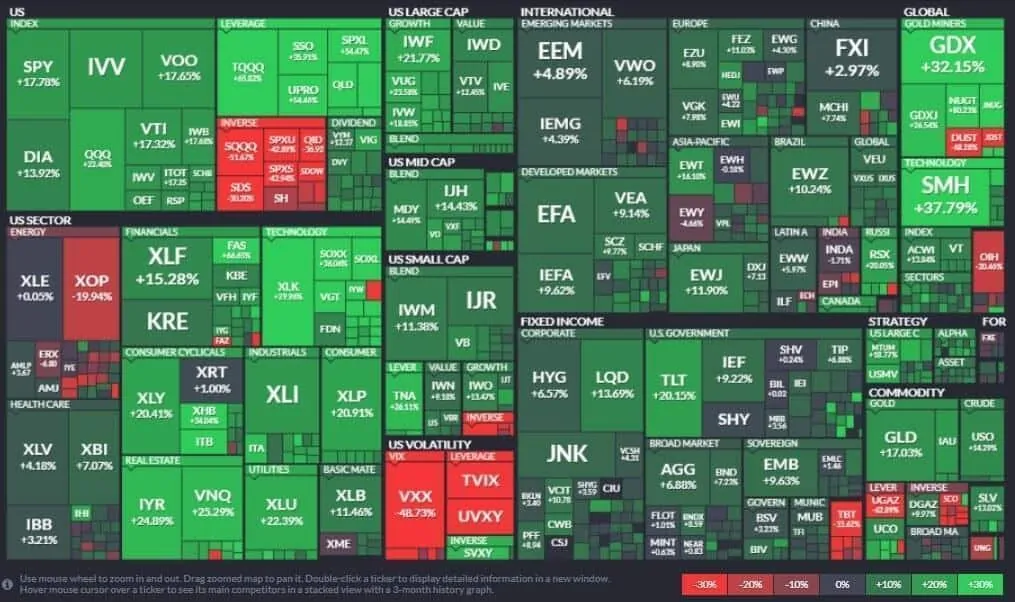What you should know about ETFs
ETF is an interesting instrument of passive investing which emerged relatively recently. We will discuss in this article what a novice should know about ETF. In this article:
- What ETF is?
- Types of ETF.
- Specific features of trading.
- Differences from UIF (Unit Investment Fund).
- Advantages and disadvantages.
- How to buy an ETF?
What ETF is?
ETF is an Exchange Traded Fund. The first fund was registered in Canada in 1990 and appeared in the US only in 1993. ETF appeared in Russian regulatory documents in 2012. However, in reality, the Moscow Exchange started to trade the first ETF on Russian Corporate Eurobonds (FXRB) in 2013.
The name itself explains that ETFs are traded on the exchange and belong to the passive investment instruments. An investor makes one exchange buy and gets a share in the securities portfolio. ETF is a good method to diversify investments.
Types of ETF
If we consider instruments which are contained in a fund, ETF could be divided into:
- ETFs – funds of stocks, bonds and bank loans. There are more than 90% of these funds in the market.
- ETCs – commodity and currency funds.
- ETNs – exchange note. Notes are specific financial products which promise an income on a certain asset.
- ETVs – futures contracts, commodity assets or currencies.
If we consider management types, ETF could be divided into:
- Index, which repeat a certain index (what ATAS exchange indices are);
- Actively managed.
The biggest (by the volume of trading) one is SPY – ETF on S&P 500 index.
ATAS will help you to analyze intraday movement of the SPY fund with the help of unique indicators of the cluster and technical analysis. See example in the 10-minute chart.
We added Big trades indicator in the autofilter mode and delta and volume indicators. Note that the price moved down and traders actively sold. Besides, we can see big red rectangles and negative delta in the chart.
The movement slowed down at a new day’s low, which we marked with a red horizontal line. Sellers decided that there would be a slight bounce but you cannot fool indicators. Delta is negative in point 1 and Big Trades shows small red squares but the price doesn’t fall. Perhaps, it is a sign that managed money buy out ETFs with limit orders. We see a huge volume and doji delta in point 2, which tells us about a fight between buyers and sellers. Big Trades shows that sellers won or rather managed money, which started to buy several candles before, won. Indicators will warn you in such a situation which side is stronger and you’d better not stand in its way.
Specific features of ETF trading
A private investor can buy or sell ETF shares or stocks only on the exchange from authorized intermediaries. Payments by the portfolio securities, for example, coupons or dividends go to the fund. After that, they are reinvested or distributed among the shareholders.
There is no surcharge for buying ETF but there is a brokerage commission. There is also a commission for managing the fund, but it is included into the cost and not charged separately. A commission for managing ETFs, which you can buy on the Moscow Exchange, is much higher than a commission for managing ETFs, which you can but on American exchanges. You cannot redeem shares, you can only sell them on the exchange.
Differences from UIFs
- ETF and UIF (Unit Investment Fund) are formed differently.
- There are less overheads if you trade ETF.
- The cost of a share and net assets is identified differently. In ETF, the stock price is formed in the process of trading and depends on demand and supply. The value of an ETF share could be compared at any time with the Net Asset Value (NAV) and a decision to buy or sell could be made. The share value may differ from the NAV due to speculative operations. However, this difference is regulated by arbitrage operations that is why it cannot last long.
- Managers calculate NAV and share value in UIF. The share value is not changed in the online mode.
- More strict requirements are imposed on the ETF structure, consequently, the transparency is higher. You can check the fund structure every day. The UIF structure is shown in the reports only.
- Some ETFs copy indices more accurately.
Advantages and disadvantages
| Advantages | Disadvantages |
| Low overheads | Not all investors have a brokerage account |
| High rate of operations | The bigger part of funds consists of shares |
| Wide diversification | Higher volatility due to speculative operations |
| Wide circle of instruments | High commissions for passive management |
| Convenience of exchange trading |
How to buy?
As of September 2019, you can buy 16 ETF and 14 EUIF (Exchange UIF) on stocks, bonds and gold on the Moscow Exchange through your broker.
The choice of ETF is much wider on American exchanges.
You can work with American exchanges though a foreign or Russian broker if you are a qualified investor.
Summary
If you do not plan to invest into ETF funds you can use their charts for confirmation of trading signals on correlating instruments. For example, if you trade a NASDAQ stock index futures you can ‘throw a glance’ at QQQ (ETF which consists of the stocks that form NASDAQ) chart.
How to identify a trading signal? Watch our YouTube video blog where we describe the ATAS indicator functionality.







